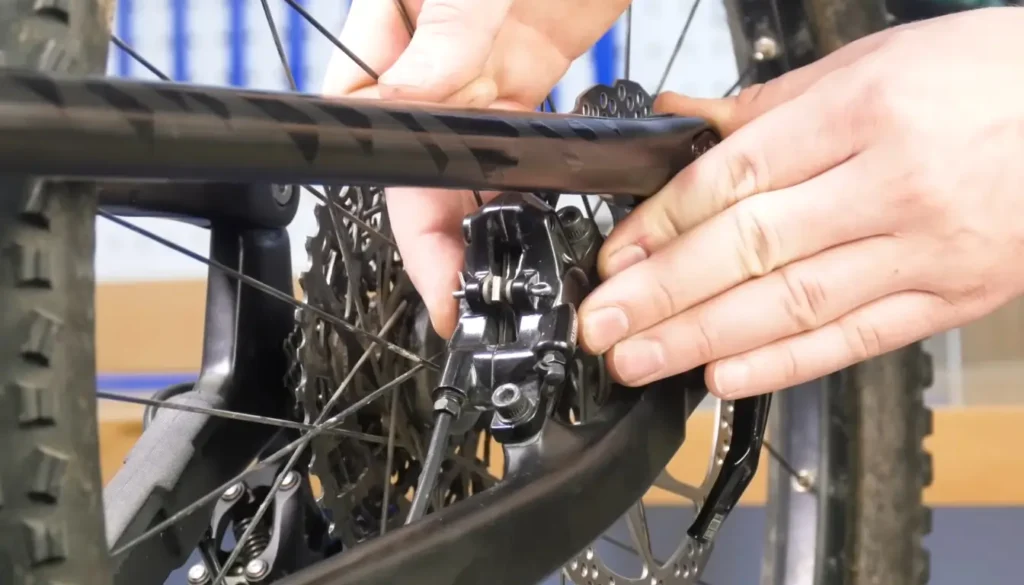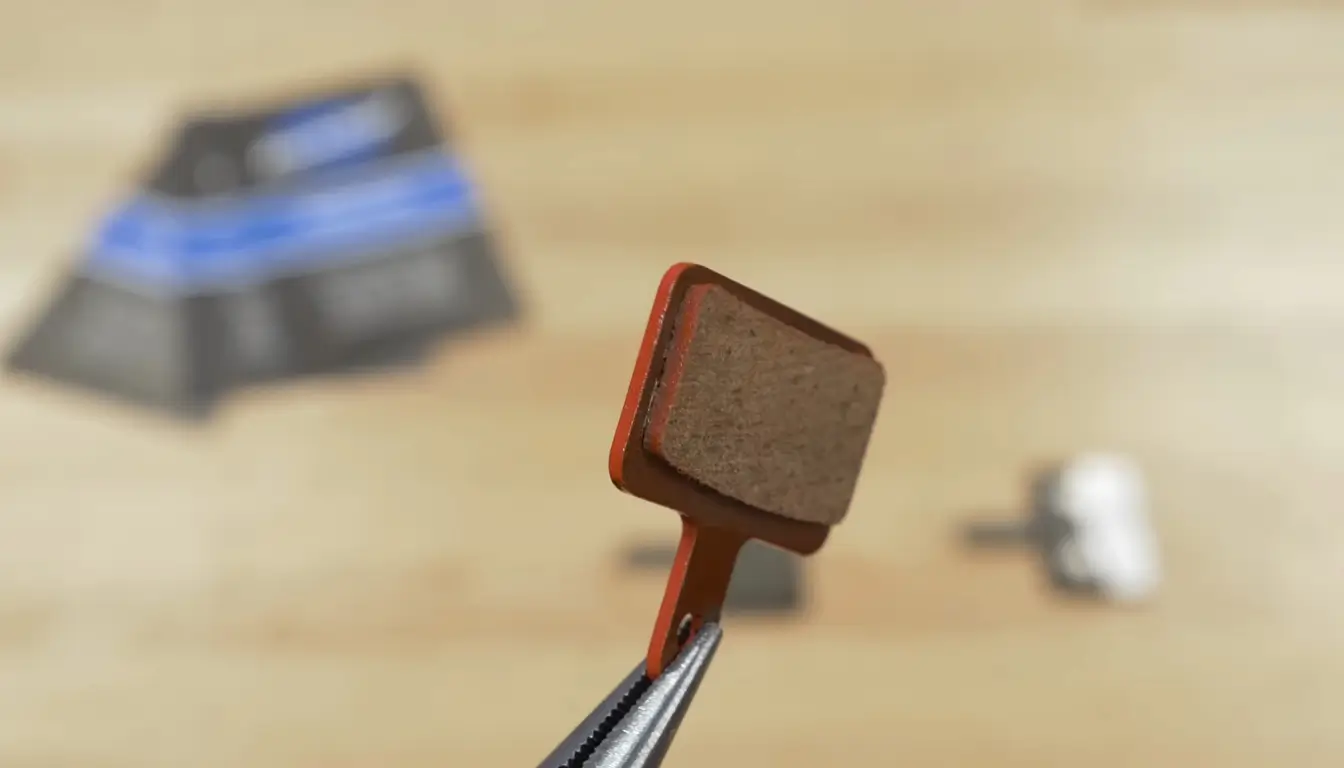If you use resin disc pads, you should get about 500-700 miles with them, which lasts almost half a year and slightly more.
Whether you ride off-road or on-road for personal transportation uses, having good bikes is crucial. You can’t go past it. Brakes will literally save your life while riding.
You should take care of your bike regularly, especially your brakes, considering how important of a part it is for a bike. The mileage you get from your bike until it’s time to get new ones solely depends on how you maintain your bike.
If you don’t maintain your bike properly, you’ll barely get 400 miles off of it. If you take care of it, you’ll get more than the average. Now all of these might leave you questioning, how long do mountain bike disc brake pads last? And we are here to answer all your queries.
Let’s get right into it.
What Affects the Lifespan of Disc Brake Pads?
Although most of the disc brake pads depend on how much care goes into them, some other factors also play a part.
Disc Brake Pads
What type of disc brake pads you use has a role. There are two types of disc brake pads, such as:
- Natural
- Sintered
Sintered disc brake pads will easily give more mileage than natural or organic disc brake pads.
Weather during winter
Weather isn’t something that anyone can control. However, if we know about which weather a bike performs best in, we might save our brakes some trouble.
According to this article, hydraulic disc brake pads functioned well at -15 Fahrenheit. At the same time, organic disc brake pads functioned better at -30 Fahrenheit. Let’s be real; organic disc brake pads have more resistance than hydraulic disc brake pads.
Weather during summer
During summer, after you hit the brakes, heat friction increases, therefore, damaging the brakes. The damage increases from time to time, depending on how hot the weather is. Organic disc brakes struggle to function properly under hot conditions. Use metallic sintered disc brakes to avoid any accidents.
How to Make Your Disc Brakes Last Longer?
Disc brakes should be cared for and replaced regularly. With that being said, here’s how you can look after your brakes and make them more resistant.
- Avoid braking often.
- Avoid leaning to the position of your brake (front or rear.) Bending will put pressure on the brakes.
- Avoid hard brakes; before hitting the brakes, try to slow your pace and then press the brakes gently. Applicable in regular use or wet conditions.
- If you’re riding very slowly, you can eliminate the need to brake by leaning on top of the bike so that it puts pressure on the overall bike and makes you stop.
Note that these are basic things that you can do to make your last longer. But maintenance and service are something that has to be done regularly regardless of your usage.
When Should You Replace Your Mountain Bike Disc Brakes?
If you’re a frequent mountain bike rider, especially if you go off-road often, change your MTB disc brakes consistently. Disc brakes give a hefty mileage if taken care of, so a little extra care will only make it last longer.
Weather conditions play a vital role in the replacement of your mountain bike’s disc brakes. During summer, there will be an increase in friction; in winter, there will be ice. So, if you don’t pay attention to the brakes, they will break and potentially cause accidents.
For sintered disc brakes, they come closer to the handlebars when they become worn out. But for organic brakes, they might feel–off. Allow us to explain If you notice your brakes being closer to the handlebars, it’s time for a replacement. But for organic disc brakes, if you feel your bike’s brake is not as crispy smooth as when you first bought it, service it or get a new one.
How to Replace Your Mountain Bike Disc Brakes?

Now that you have identified that your mountain bike disc brakes need a repair or a change. Here is a step-by-step guide on how to change them. Explained in easy words.
You will need the following components:
- Replacement disc brake pads
- Disc brake cleaner
- Cloth or a towel
- Regular screwdriver
- Wide head screwdriver
- Pliers
For the installation, follow the steps:
Step 1: Identify the problem
Look for signs of wear or dirt in the brakes. Take your time and be careful while inspecting.
Step 2: Detach the brakes
Remove the brakes by using the wide-head screwdriver. You may use a pad pusher tool if you have access to one. Detach the pad retention system, then the brake pads using pliers. Use needle-nose pliers if you have one.
After removing the parts, gently clean the dirt.
Step 3: Attach replacement pads
Install the new brake pads with the retention screws and pins. Pay attention to the rotor system and center the caliper.
Step 4: Spin, trial, and error
It does what it says; after attaching the brand-new pads, spin the wheel and press the brakes to test your new brakes’ power. Take a test ride if you’re feeling breezy.
That wasn’t so hard; all you have to do is put your mind to it. Don’t worry if you’re confused; your replacement pads will come with detailed instructions on how to install them.
How Much Do Disc Brake Pads Cost?
Mountain bike disc brake pads cost varies depending on the brakes you are getting and the condition they are in; they are new or used. But we can give you an estimate. The average price of disc brake pads is about 10-40 dollars.
Now, if you’re not installing the brake pads yourself and getting help from a professional, then that cost will increase as you’ll need to pay for assembly, installment, and labor.
If you’re on a budget, we recommend installing the disc brake pads yourself and getting non-cartridge pads. Cartridge or rotors are expensive.
We also recommend buying the parts online as most websites have discounts going on most of the time. If you’re going for used options, make sure you check and verify the parts, whether they are original or not, and then make a purchase. We prefer buying a low-end if needed than buying second-hand stuff.
Final Thoughts
Disc brakes depend on the care you put into them. The average mileage might be 500-700 miles, but brakes that have been cared for will easily give more.
Weather and disc brake pads affect the brake’s lifespan. You can avoid braking often or putting pressure on your brakes for them to last longer. Replacing your disc brake isn’t hard; following the steps mentioned in the post will only make it easier.

I am Ryan Ford, a mountain biking enthusiast who loves to explore the outdoors. I also like to go on adventures with friends and anything else that involves being outside. I love my bike because it gets me out of the house and gives me an opportunity to enjoy nature.

